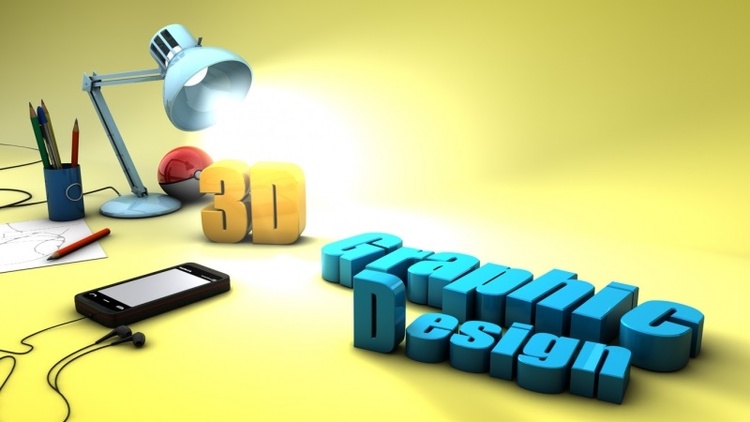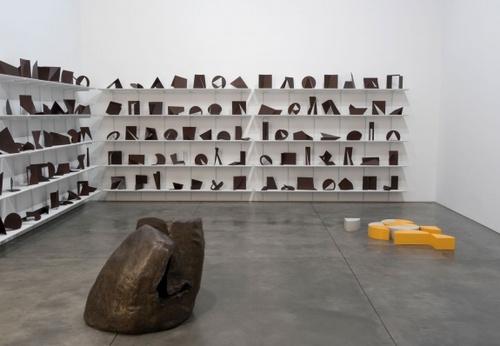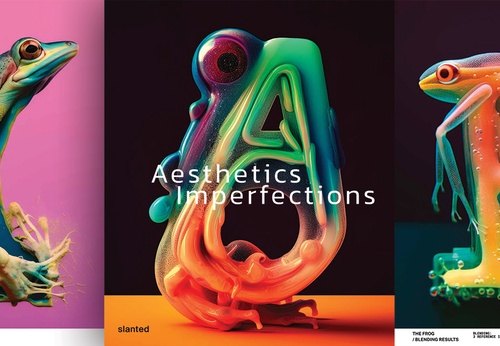
The Evolution of Graphic Design from Typography to 3D
From Printing to the Digital Universe: The Evolution of Graphic Design from Typography to 3D
Graphic design has radically transformed since Gutenberg's invention of movable type in the 15th century. Initially focused on static printed compositions, the field underwent technological revolutions that redefined its essence:
1. Typographic Era (15th-20th centuries):
- Dominated by lead type, woodcuts, and lithography.
- Movements such as the Bauhaus (1920s) merged art and functionality.
- Emergence of corporate visual identities (e.g., IBM logo, 1956).
2. Digital Revolution (1980s-2000s):
- Software such as Adobe Photoshop and Illustrator replaced manual techniques.
- Dynamic typography (e.g., scalable vector fonts).
- Popularization of flat design and minimalism.
3. Era of 3D and Interactivity (Post-2010):
- Tools like Blender, Cinema 4D, and Unity democratized three-dimensional creation.
- Integration with Augmented Reality (e.g., interactive packaging) and motion design.
- Trends: *neomorphism*, hyperrealism, and parametric designs (generated by algorithms).
Contemporary Impacts:
- Sustainability: Eco-conscious design (eco-friendly Pantone colors, waste reduction).
- Inclusion: Tools like Figma facilitate real-time global collaboration.
- Fusion of Media: 3D illustration in branding (e.g., animated logos for social media).
The future points to immersive reality (metaverse) and generative AI, where designers act as curators of autonomous creative systems.
Latamarte


- November 26, 2025
The Influence of Brazilian Neo-Concretism on Contemporary Art

- November 25, 2025
Aesthetics Imperfections | Slanted Publishers

- November 25, 2025
Creating Art with Alcohol Ink

- November 25, 2025
Graffiti as a tool for social activism in Latin America

- November 25, 2025
Street art en São Paulo, Bogotá y Ciudad de México


- November 25, 2025
Marcelo Valle - Brazil

- November 24, 2025
Slanted Yearbook of Lettering: No. 2

- November 26, 2025
Latin American Abstract Painting: From …

- November 26, 2025
The Influence of Brazilian Neo-Concreti…

- November 25, 2025
Graffiti as a tool for social activism …

- November 25, 2025
Street art en São Paulo, Bogotá y Ciuda…

- November 23, 2025
Contemporary Sculpture in South America

- November 22, 2025
Graffiti as a Tool for Social Activism …

- November 22, 2025
Latin American Urban Artists Who Are Se…

- November 20, 2025
The Evolution of Modernism in Latin Ame…

- November 19, 2025
Colombia: Muralism as a Social Voice an…

- November 19, 2025
Brazil: The Creative Power of Urban Art

- November 18, 2025
Visual Arts: History, Languages, and Cu…

- November 18, 2025
Indigenous Art: Characteristics and Typ…

- November 17, 2025
What are the types of AI?

- November 16, 2025
The Importance of Aesthetic Experience …

- November 16, 2025
Art as a Mirror of Culture: Between Tra…

- November 15, 2025
The Influence of Artificial Intelligenc…

- November 15, 2025
The Evolution of Digital Art in the 21s…

- November 13, 2025
Urban Art in Latin America: A Visual Re…

- November 13, 2025
Urban Art in Latin America

- November 12, 2025
The Art of Photography: Capturing the E…

- August 29, 2023
The history of Bolivian art

- February 19, 2024
Analysis and meaning of Van Gogh's Star…

- January 28, 2024
Culture and Art in Argentina

- September 25, 2023
What is the importance of art in human …

- September 23, 2023
What is paint?

- August 10, 2023
14 questions and answers about the art …

- August 23, 2023
The 11 types of art and their meanings

- August 30, 2023
First artistic manifestations

- September 23, 2023
Painting characteristics

- January 12, 2024
10 most beautiful statues and sculpture…

- September 23, 2023
History of painting

- March 26, 2024
The importance of technology in art1

- March 26, 2024
Cultural identity and its impact on art…

- August 16, 2023
The 15 greatest painters in art history

- April 06, 2024
History of visual arts in Ecuador

- April 02, 2024
History visual arts in Brazil

- October 18, 2023
History of sculpture

- July 13, 2024
The impact of artificial intelligence o…

- August 13, 2023
9 Latino painters and their great contr…

- April 07, 2024
Graffiti in Latin American culture

- February 19, 2024
Analysis and meaning of Van Gogh's Star…

- August 13, 2023
9 Latino painters and their great contr…

- August 23, 2023
The 11 types of art and their meanings

- August 10, 2023
14 questions and answers about the art …

- August 29, 2023
The history of Bolivian art

- August 27, 2023
15 main works of Van Gogh

- January 28, 2024
Culture and Art in Argentina

- November 06, 2023
5 Latin American artists and their works

- September 23, 2023
Painting characteristics

- September 23, 2023
What is paint?

- September 25, 2023
What is the importance of art in human …

- August 30, 2023
First artistic manifestations

- March 26, 2024
Cultural identity and its impact on art…

- December 18, 2023
10 iconic works by Oscar Niemeyer, geni…

- January 20, 2024
What is the relationship between art an…

- January 12, 2024
10 most beautiful statues and sculpture…

- October 30, 2023
Characteristics of Contemporary Art

- August 24, 2023
The most famous image of Ernesto "Che" …

- August 22, 2023
What are Plastic Arts?

- May 26, 2024


